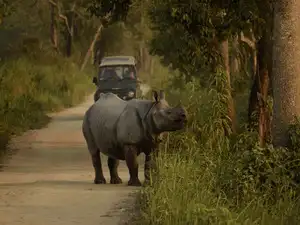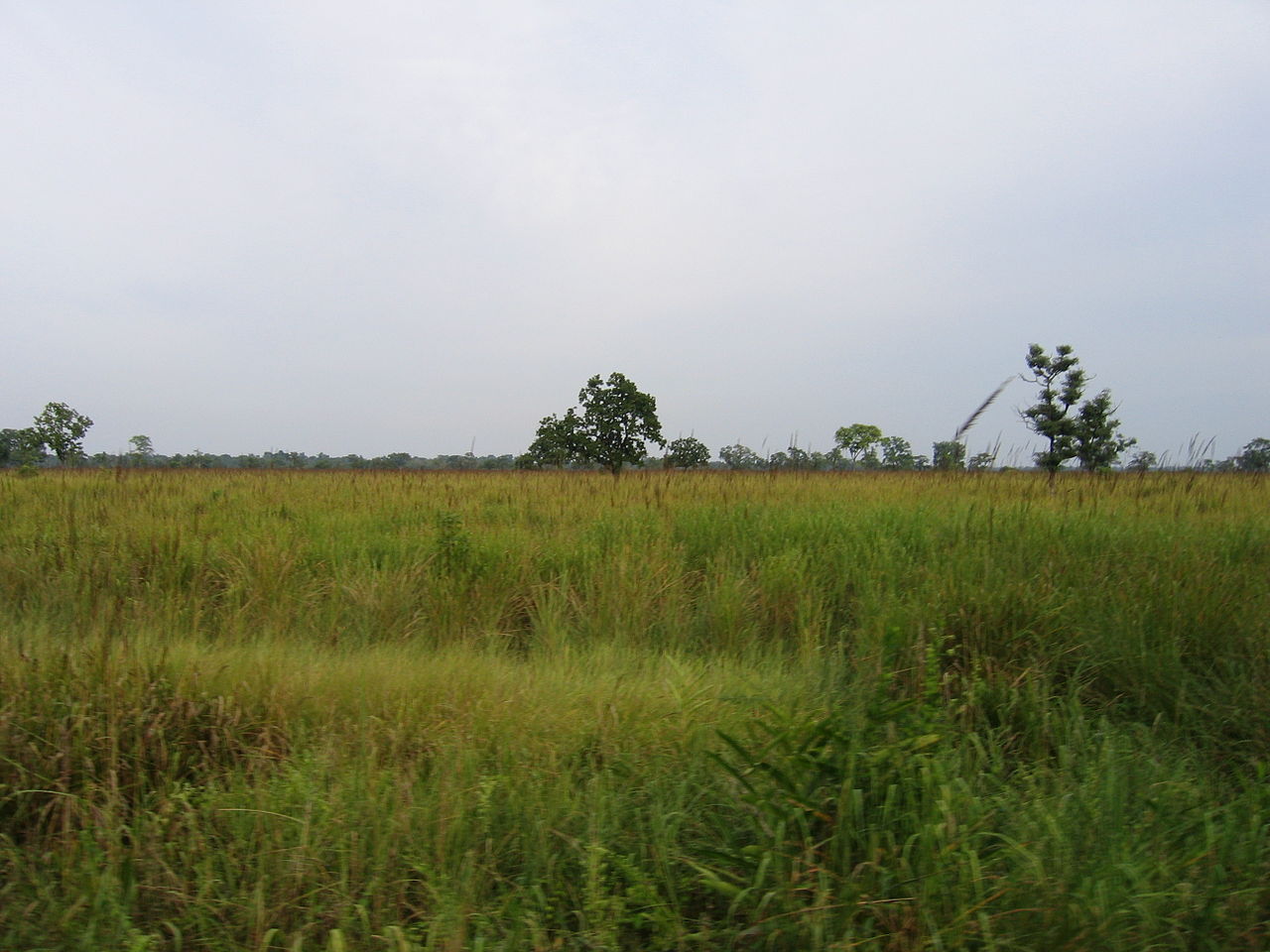 |
| Indian rhino on forest road |
In the heart of Assam, where the mighty Brahmaputra winds through a landscape of mist and monsoon, lies Kaziranga National Park — a realm that shelters some of India’s most extraordinary creatures. Here, elephants roam in gentle herds, wild water buffalo graze by glimmering pools, and the great one-horned rhinoceros — the park’s most enduring symbol — stands watch over the floodplains. For over a century, Kaziranga’s vast grasslands and whispering forests have formed a sanctuary of life, teeming with the pulse of the wild. But beneath this timeless beauty, quiet changes have been unfolding. A recent study by the Wildlife Institute of India reveals a startling loss: over 300 square kilometers of grassland have vanished in the last hundred years. Researcher Umar Saeed and his team traced this transformation by blending old topographic maps with modern satellite imagery, mapping a story that spans more than a century. What they discovered is both fascinating and sobering — since 1913, Kaziranga’s grasslands have shrunk by 318.3 square kilometers, an area roughly the size of Kolkata.
As the grasslands receded, the forests crept in. What once covered a mere 0.6 square kilometers of woodland in 1913 has now expanded to more than 229. Waterbodies that had once swelled with each flood began to diminish after 2013, a sign of shifting rivers and changing hydrology. And in the skies above, the climate, too, has been altering — the hottest days now slightly cooler, the nights distinctly warmer. Rainfall has become heavier, the air thicker with humidity, and the soil richer with moisture.
Yet, not all change brings renewal. Scientists warn that while the spread of forests may seem like nature’s triumph, it tells a quieter, more troubling story. The open grasslands — the very lifeblood of Kaziranga’s elephants, buffaloes, and rhinos — are being choked by invasive plants. In the shadow of the trees, a struggle unfolds: a fight to preserve the ancient meadows that have sustained this wild kingdom for generations.
 |
| Grassland in Kaziranga |
The story unfolding in Kaziranga is not merely one of change — it is a call for renewal. Scientists say the findings underscore an urgent need for adaptive management, strategies that can restore habitats, maintain the delicate balance of water and soil, and build resilience against a shifting climate. For the Brahmaputra floodplains, these actions may decide the difference between persistence and loss. Through the blending of land-use history and climate records, researchers have uncovered a powerful truth: the transformations shaping Kaziranga are driven by both human hands and the changing climate. The once-vast grasslands, lifelines of this ecosystem, are now under siege. At least eight invasive plant species — among them Chromolaena odorata and Mikania micrantha — have crept across the plains, suffocating native grasses and stealing sunlight from the ground below. For the great herbivores of Kaziranga — the rhinos, buffaloes, and deer — these invasions strike at the heart of survival. Species like the hog deer, swamp deer, and sambar rely on open meadows for food and space to roam. As the grasslands shrink, their feeding grounds dwindle, and the delicate rhythms of life begin to falter.
To safeguard this living landscape, scientists stress the importance of identifying and removing invasive plants, reviving the grasslands before they vanish altogether. Alongside this, efforts must focus on restoring the park’s hydrological harmony, strengthening its climate resilience, and curbing human pressures that tip the balance further. For Kaziranga is more than just a protected reserve — it is a UNESCO World Heritage Site, a sanctuary where nature’s grandeur and fragility coexist. Its future, like the river that nourishes it, depends on how we choose to act today.
No comments:
Post a Comment